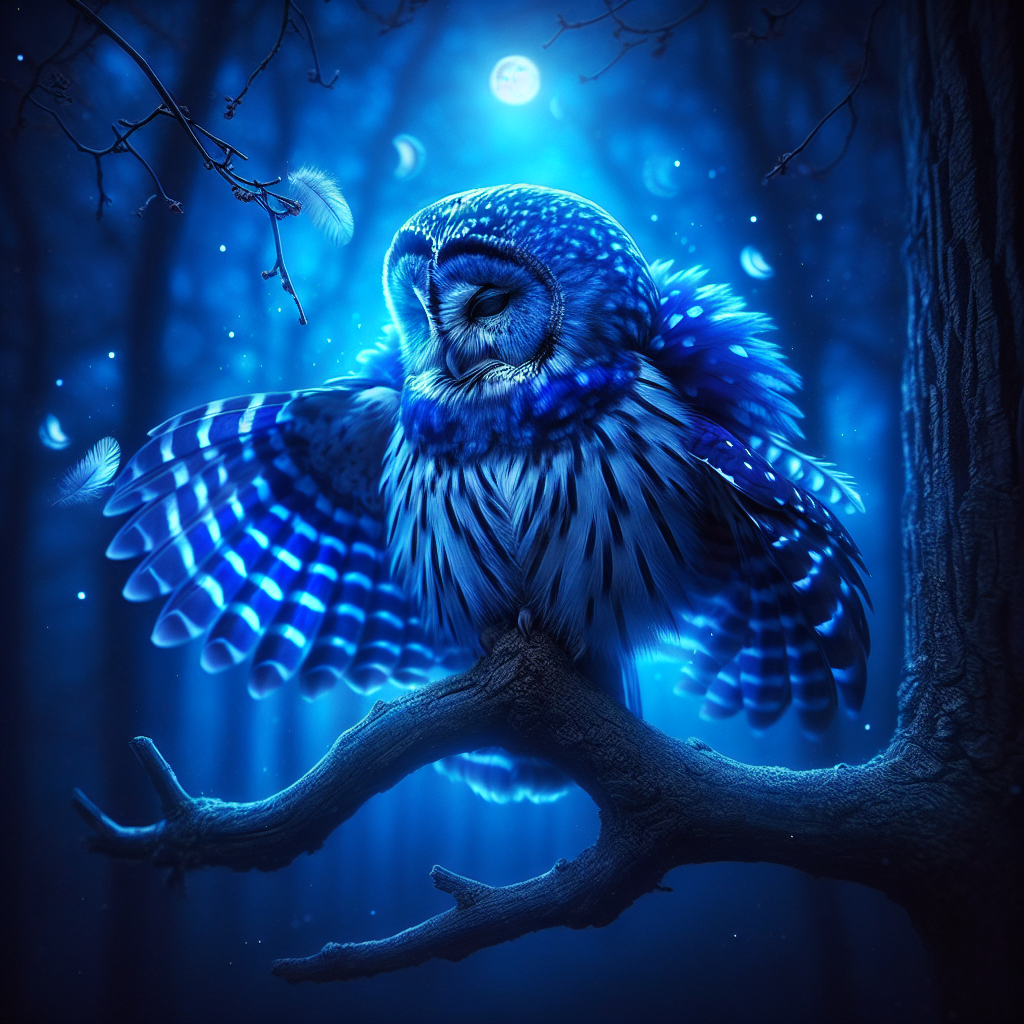The Mystique of the Blue OwlThe blue owl has captured the imagination of many nature enthusiasts and bird watchers around the world. Known for its stunning coloration and unique characteristics, this bird serves as a symbol of wisdom, mystery, and enchantment in various cultures. With its striking blue feathers, the blue owl is not just a visual delight; it’s a creature shrouded in fascinating stories and tales.Found primarily in forested areas, the blue owl’s habitat provides an ideal environment for it to thrive. These birds are often nocturnal, allowing them to hunt and interact primarily during the night. This nocturnal lifestyle adds an allure to their existences, making every sighting a rare and precious moment for birdwatchers. The blue owl’s call is a haunting melody that echoes through the woods, creating an atmosphere of wonder and tranquility.Understanding the blue owl’s behavior is vital for those who want to appreciate its beauty. They are known for their intelligence, which plays a crucial role in their hunting techniques and social interactions within their species. A blue owl can rely on its exceptional hearing ability to locate prey even in total darkness, making it one of nature’s most adept hunters. Furthermore, their feeding habits are diverse; they primarily consume small mammals, insects, and other birds, adapting their diets to the availability of food sources in their habitat.Besides their hunting prowess, blue owls are known for their unique mating rituals. During the breeding season, they engage in elaborate displays to attract partners. Male blue owls often showcase their vibrant blue feathers, puffing up and performing captivating dances to capture the attention of potential mates. This striking courtship behavior not only demonstrates their health and vitality but also strengthens bonds between partners.In various cultures, the blue owl is more than just a bird; it represents different symbols. For instance, in ancient mythology, owls have been perceived as guardians of the underworld or as messengers between realms. Some Native American tribes even view blue owls as wise spirits, offering guidance and protection. The connection between humans and the blue owl continues to evolve as more people appreciate its role in our ecosystem and its significance in folklore.Conservation efforts are essential to ensure that the blue owl population remains stable. As urbanization expands and natural habitats are threatened, it is crucial to strike a balance between development and environmental preservation. Initiatives aimed at protecting forests and promoting awareness about the significance of this magnificent bird can help maintain the delicate ecosystem that supports the blue owl and many other species.In conclusion, the blue owl is a captivating creature that embodies the mysteries of the natural world. Its striking appearance, intelligent behavior, and cultural significance make it a subject of fascination for many. By understanding more about the blue owl, we can appreciate the complexities of nature and work towards ensuring that these beautiful birds continue to grace our forests for generations to come.The Role of Blue Owls in EcosystemsThe ecological role of blue owls extends beyond their captivating presence. As apex predators, these birds play a crucial role in maintaining the balance of their ecosystems. By controlling the populations of small mammals and insects, blue owls contribute to the health and stability of their environments. Their presence indicates a robust ecosystem, thriving with diverse flora and fauna, which can be a telltale sign of environmental well-being.Moreover, blue owls also serve as indicators of ecological health. As sensitive species, their population trends can reveal significant changes in habitat quality and availability. Conservationists often monitor blue owl populations to assess the impacts of pollution, deforestation, and climate change on their habitats. Therefore, protecting the blue owl not only helps preserve its species but also ensures the longevity and health of their ecosystems.One of the most intriguing aspects of blue owls is the way they interact with other species within their habitats. They have developed symbiotic relationships that are essential for survival. For instance, by keeping certain rodent populations in check, blue owls facilitate the growth of plant species that could otherwise be overgrazed. This highlights the interconnectedness of nature and the importance of each organism, including the blue owl.Research into the blue owl’s behavior and ecological contributions continues to unveil fascinating insights into their role within forest ecosystems. Scholars and birdwatchers alike study their hunting patterns, breeding habits, and social structures to understand how blue owls can provide a glimpse into the health of the environments they inhabit.In light of climate change, the adaptability of blue owls has become a focus of conservation studies. Their ability to cope with changes in temperature and habitat availability could determine their survival in an ever-changing world. By understanding how blue owls adapt, conservationists can develop strategies to protect them and ensure their habitats remain viable.A Beacon of ConservationOrganizations promoting wildlife conservation recognize that raising public awareness of the blue owl is paramount. Educational programs and community initiatives are designed to inform people about the importance of protecting these beautiful creatures and their natural habitats.Individuals are encouraged to engage in local conservation efforts, such as tree planting, habitat restoration, and wildlife monitoring projects. These grassroots movements often lead to a greater appreciation of the wildlife around us, fostering a sense of responsibility to protect these essential species and their ecosystems.By participating in community-led conservation efforts, individuals can experience the joy of connecting with nature and witnessing the beauty of blue owls in their natural environment. Through guided birdwatching events, nature walks, and educational workshops, people can cultivate a deeper understanding of blue owls, creating lasting memories while contributing positively to their ecosystems.In essence, blue owls encapsulate the wonders of nature and the importance of ecological balance. Their protections hinge on collective action and awareness, making it crucial for society to prioritize biodiversity preservation. As we learn more about these majestic birds, we can also honor their intricate relationships with other species and their environments. Blue owls will continue to amaze and inspire, reminding us of our interconnections within the web of life.Conclusion: The Enchantment of Blue OwlsIn conclusion, the fascination surrounding the blue owl is emblematic of the intricate beauty of the natural world. As we delve deeper into this bird’s life and habitats, we unveil layers of knowledge that connect us to our ecosystems. The blue owl, with its vibrant coloring, significant role in the food chain, and cultural symbolism, serves as a powerful reminder of nature’s complexity.Preserving the blue owl not only ensures the survival of a remarkable species but also champions the broader movement toward environmental sustainability. As we nurture our understanding and appreciation of these birds, we foster a culture of conservation that will resonate for generations. Through awareness, education, and action, we can protect the enchanting blue owl and the delicate ecosystems it represents, ensuring a brighter future for both the avian world and our planet.










